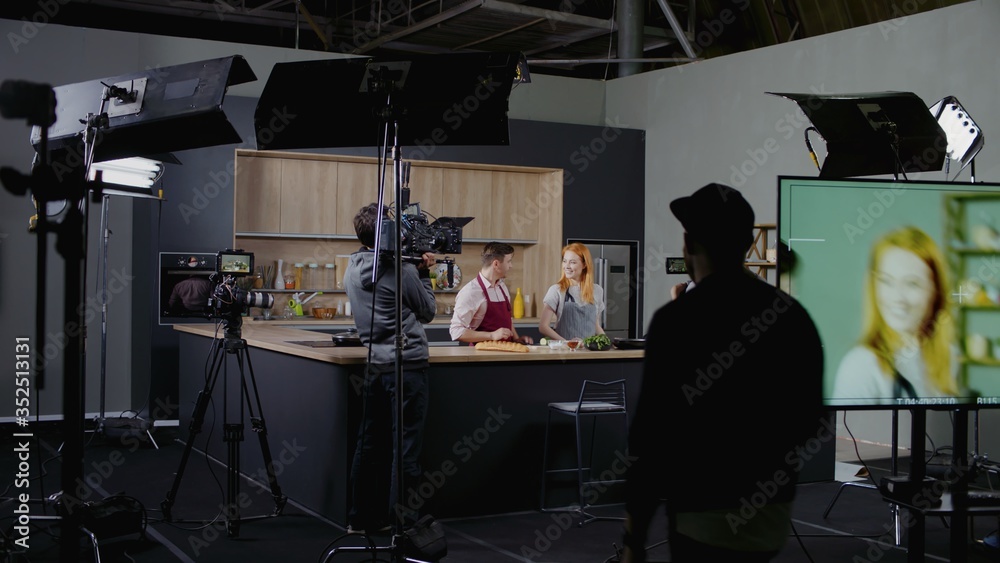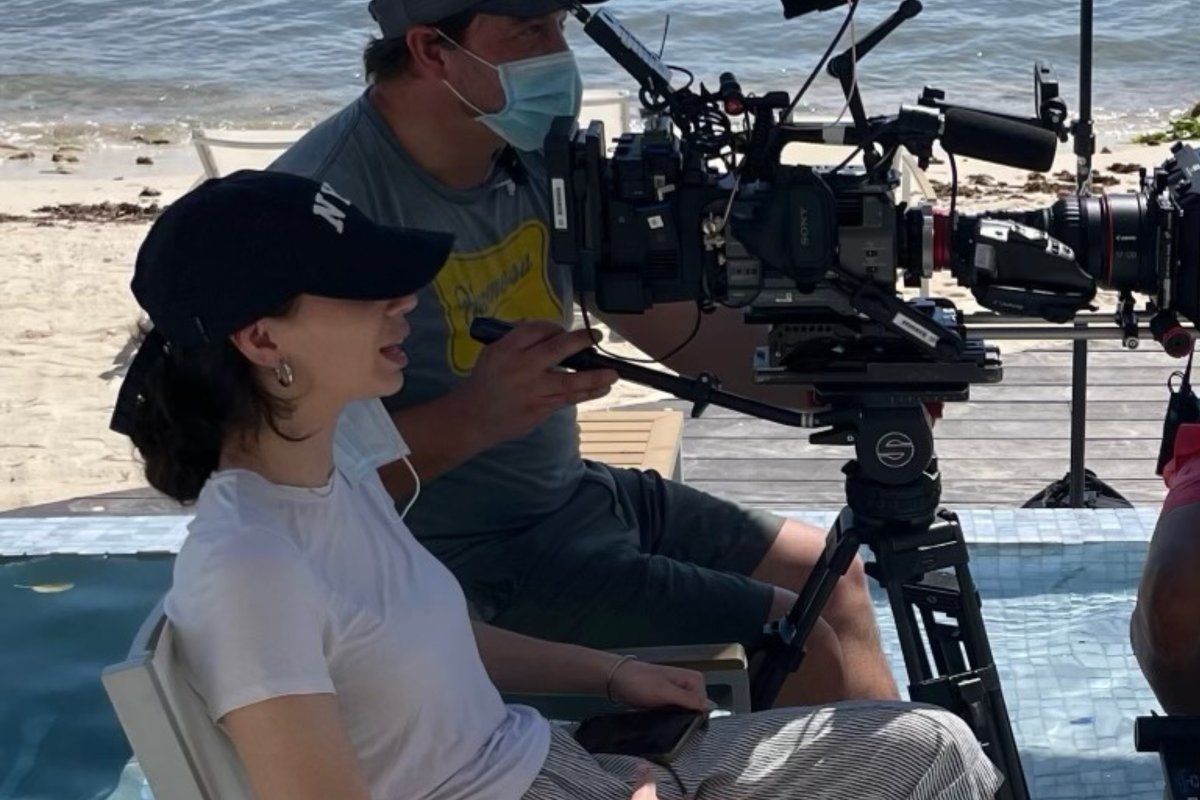TV Show Production Behind-the-Scenes: Unveiling the Magic of Television
1. Introduction to TV Show Production
TV shows have become an integral part of our daily lives, providing entertainment, education, and even a sense of community. However, the intricate process that brings these shows to life often remains shrouded in mystery. Understanding TV show production is crucial for appreciating the hard work that goes into each episode, from the initial idea to the final cut.
1.1 The Importance of Understanding TV Production
By gaining insight into the production process, viewers can better appreciate the creativity and collaboration involved in crafting a successful show. It’s not just about acting; countless individuals play vital roles in making a TV show a reality. As viewers, understanding this behind-the-scenes action enriches our viewing experience and fosters a deeper connection with the content we consume.

2. Pre-Production: Laying the Groundwork
The pre-production phase is where the foundation of a TV show is established. This stage is critical for setting the tone, direction, and overall vision of the project.
2.1 Script Development
Every great show starts with a compelling script. Writers develop the storyline, create characters, and establish dialogues that engage the audience. This phase often involves multiple revisions to refine the plot and ensure that it resonates with viewers. Some successful shows, like Breaking Bad, have showcased how a well-crafted script can lead to critical acclaim and a dedicated fanbase.
2.2 Casting Calls and Auditions
Once the script is in place, the next step is casting. This is a vital process that involves auditions, where actors showcase their talent to secure a role. Casting directors play a significant role in selecting the right talent, ensuring that each actor fits the character’s persona perfectly. For instance, the casting of Bryan Cranston as Walter White in Breaking Bad was pivotal to the show’s success.
2.3 Location Scouting and Set Design
Finding the perfect location can significantly enhance the authenticity of a show. Location scouts work tirelessly to find settings that match the script’s vision. Once locations are selected, set designers come into play, creating immersive environments that captivate the audience. Whether it’s a gritty urban landscape or a picturesque countryside, the set becomes a character in its own right.
2.4 Budgeting and Scheduling
Finally, a comprehensive budget and schedule are established. This stage involves meticulous planning to allocate resources effectively, ensuring that every aspect of production runs smoothly. A well-planned budget can make or break a show, as unexpected costs can derail even the most promising projects.
3. Production Phase: Bringing the Script to Life
After all the groundwork is laid, it’s time for the production phase, where the magic truly begins.
3.1 Filming Techniques and Equipment
The filming process utilizes various techniques and equipment to create visually stunning content. Directors, cinematographers, and crew members work together to capture the essence of each scene. From using high-definition cameras to innovative lighting techniques, the goal is to create an engaging visual narrative.

3.2 The Role of the Director
The director is the creative force behind the scenes, responsible for bringing the script to life. They guide actors’ performances, make critical decisions about camera angles, and oversee the overall vision of the show. Directors like David Fincher have become known for their distinctive styles, influencing the aesthetic and emotional impact of the shows they helm.
3.3 Working with the Crew
Production is a collaborative effort, with numerous crew members contributing their expertise. From grips and gaffers to makeup artists and costume designers, each person plays a crucial role in the filmmaking process. The synergy among the team is what ultimately leads to a successful production.
3.4 Daily Operations and Call Sheets
Each day of filming is meticulously planned with a call sheet, detailing what scenes will be shot, which actors are needed, and the schedule for the day. This document is essential for maintaining organization on set, ensuring that everyone is on the same page and that the production stays on track.
4. Post-Production: Editing and Final Touches
Once filming is complete, the focus shifts to post-production, where the raw footage is transformed into a polished final product.
4.1 The Editing Process
Editors work tirelessly to piece together the footage, ensuring that the narrative flows smoothly. This process often involves cutting scenes, rearranging shots, and adding transitions to create a cohesive story. Editing software has evolved, allowing for more creative possibilities, resulting in stunning visual storytelling.
4.2 Sound Design and Mixing
Sound is a critical element of any TV show, as it enhances the emotional impact of the story. Sound designers and mixers work to create the perfect soundscape, incorporating dialogue, sound effects, and music. This phase can significantly influence the audience’s experience, as the right sounds can evoke powerful emotions.

4.3 Visual Effects (VFX)
In today’s digital age, visual effects have become increasingly important in TV production. From adding fantastical elements to enhancing action sequences, VFX artists play a crucial role in creating immersive worlds. Shows like Game of Thrones exemplify the incredible potential of visual effects to bring grand stories to life.
4.4 Final Review and Approval
Before a show can be aired, it goes through a final review process. Producers, directors, and network executives assess the finished product, providing feedback and making last-minute adjustments. This step is vital to ensure that the show meets the standards expected by both the creators and the audience.
5. Marketing and Distribution
Once the show is complete, it’s time to market it to the audience.
5.1 Creating Buzz: Trailers and Promotions
Effective marketing strategies are crucial for a show’s success. Trailers and promotional materials are created to generate excitement and anticipation. Engaging with potential viewers through social media and interviews can also boost visibility and create a loyal fanbase.
5.2 Platforms and Distribution Channels
With the rise of streaming services, the landscape of TV distribution has changed dramatically. Shows are now distributed across various platforms, including traditional networks and streaming services like Netflix and Amazon Prime Video. Understanding these channels is key to maximizing a show’s reach.
5.3 Audience Engagement Strategies
Engaging with the audience post-release is equally important. This can include social media interactions, fan events, and behind-the-scenes content. Building a community around a show can help sustain its popularity and foster a dedicated viewership.
Frequently Asked Questions (FAQs)
1. What is the typical timeline for producing a TV show?
The timeline can vary widely, but typically, it takes anywhere from several months to a couple of years to produce a TV show, depending on the complexity of the project.
2. How do casting directors select actors?
Casting directors evaluate actors based on auditions, considering their ability to embody the character, chemistry with other cast members, and overall fit for the show’s vision.
3. What role does technology play in modern TV production?
Technology has revolutionized TV production, from advanced cameras and editing software to innovative sound design techniques and visual effects, allowing creators to push the boundaries of storytelling.
4. How are budgets determined for TV shows?
Budgets are typically determined based on factors such as the scope of the project, location costs, cast salaries, and production resources. Careful planning is essential to ensure financial feasibility.
In the next section, we will delve into the conclusion, highlighting the collaborative art of TV show production and discussing future trends in the industry. Stay tuned!
6. The Evolution of TV Production: Trends and Future Directions
The landscape of television production is continuously evolving, influenced by technological advancements, audience preferences, and industry dynamics. Here are some key trends shaping the future of TV show production.
6.1 Streaming Services and Original Content
The rise of streaming platforms like Netflix, Hulu, and Disney+ has transformed how content is produced and consumed. These services are investing heavily in original programming, often taking creative risks that traditional networks might shy away from. As a result, viewers are treated to diverse storytelling that caters to niche audiences.

6.2 The Impact of Virtual Production
The emergence of virtual production technology has revolutionized how shows are filmed. Using LED walls and real-time rendering, filmmakers can create immersive environments without needing extensive location shoots. This approach, popularized by shows like The Mandalorian, allows for greater flexibility and creativity during production.
6.3 Audience Interaction and User-Generated Content
Today’s audiences crave interactivity. Many shows now incorporate social media elements, enabling viewers to engage with the storyline and characters in real time. User-generated content, such as fan edits and memes, has also become an integral part of the TV ecosystem, driving community involvement and discussion around shows.
7. The Challenges of TV Show Production
While producing a TV show can be an exhilarating endeavor, it is not without its challenges. Here are some common obstacles that producers face:
7.1 Time Constraints and Scheduling Conflicts
Managing schedules can be a daunting task, especially when coordinating the availability of cast and crew. Delays in production can arise from weather issues, actor conflicts, or unforeseen circumstances, impacting the overall timeline of the project.
7.2 Budget Limitations
Staying within budget is a constant struggle in the entertainment industry. Producers must make tough decisions on where to allocate funds, often balancing the need for high production values with financial constraints. This can sometimes lead to compromises in quality or scope.
7.3 Creative Differences
With so many stakeholders involved in TV production, creative differences can arise. Writers, directors, and producers may have conflicting visions for the project, requiring effective communication and collaboration to resolve disputes and ensure a unified vision.
8. The Cultural Impact of TV Shows
Television shows have a profound impact on culture, shaping societal norms, values, and conversations. Here are a few ways TV shows influence culture:
8.1 Social Commentary and Reflection
Many shows serve as a mirror to society, addressing relevant issues such as race, gender, and politics. For example, The Handmaid’s Tale not only provides entertainment but also sparks critical discussions about women’s rights and authoritarianism.
8.2 Fostering Community and Connection
TV shows can bring people together, fostering communities around shared interests. Whether through fandoms, watch parties, or online discussions, shows create spaces for connection and conversation, transcending geographical barriers.
8.3 Influencing Trends and Consumer Behavior
The fashion, language, and lifestyle choices depicted in popular TV shows can lead to trends that influence consumer behavior. Brands often capitalize on this by partnering with shows for product placements, enhancing their visibility among target audiences.
9. Conclusion: The Art of Television Production
Understanding the intricacies of TV show production enhances our appreciation for the art of storytelling. Each phase—from pre-production to post-production—requires creativity, collaboration, and technical expertise. As viewers, we are privileged to witness the culmination of countless hours of hard work, dedication, and passion.
As technology continues to evolve and audiences demand innovative content, the future of television production holds exciting possibilities. The next time you sit down to enjoy your favorite show, take a moment to reflect on the extraordinary effort that goes into making it a reality.

Frequently Asked Questions (FAQs)
1. What are the different stages of TV show production?
The stages include pre-production, production, and post-production, each encompassing various tasks such as scriptwriting, filming, editing, and marketing.
2. How do streaming platforms impact TV production?
Streaming platforms encourage unique storytelling and often take risks on original content, influencing traditional networks to adapt and innovate.
3. What are some emerging technologies in TV production?
Virtual production, augmented reality, and advanced editing software are just a few technologies reshaping the landscape of television.
4. How can I get involved in TV show production?
Getting involved can range from pursuing education in film and media to seeking internships or entry-level positions on set. Networking and gaining hands-on experience are crucial steps in this field.
In exploring the world of TV production, we uncover not just the mechanics of creating content, but the powerful stories that resonate with us all. Whether you’re an aspiring filmmaker or a passionate viewer, understanding this process deepens our connection to the art of television.

